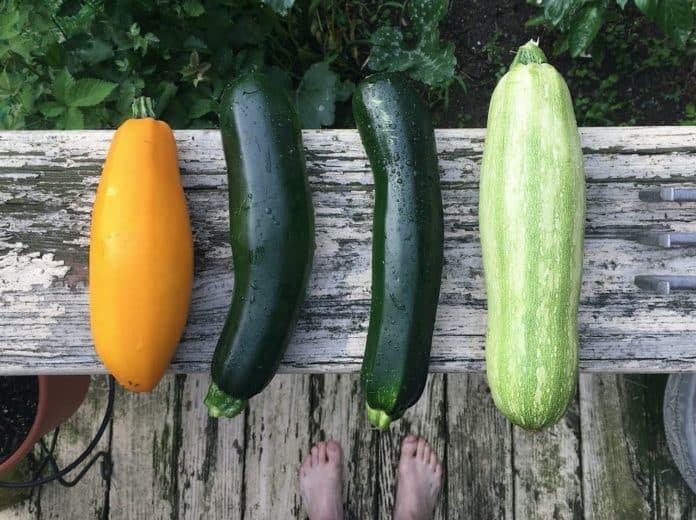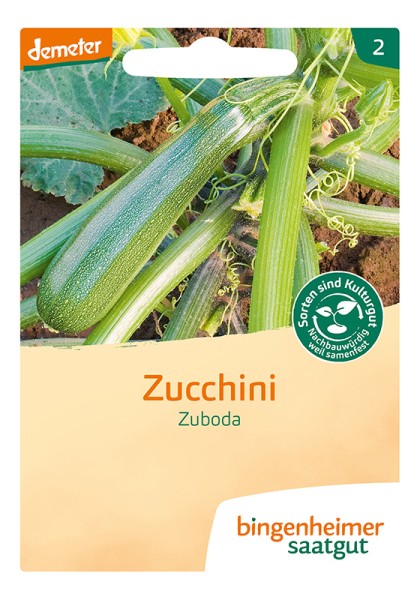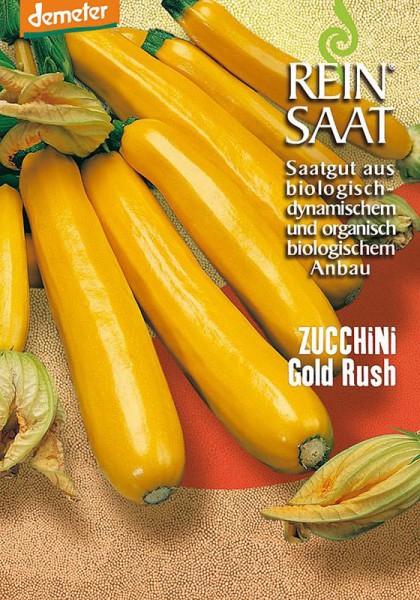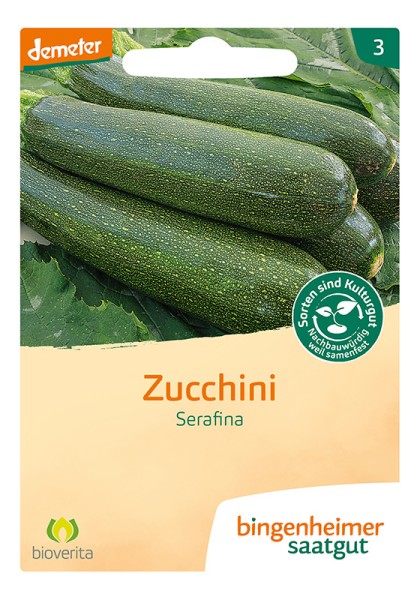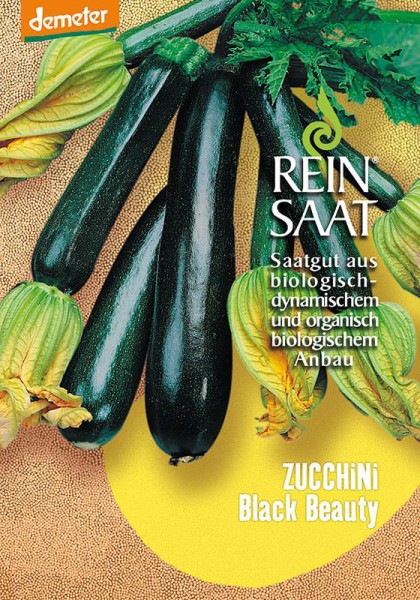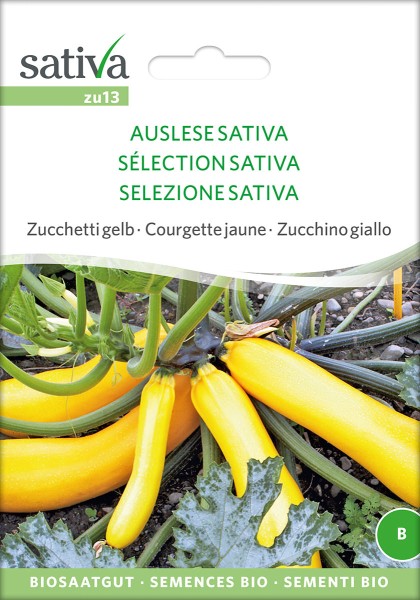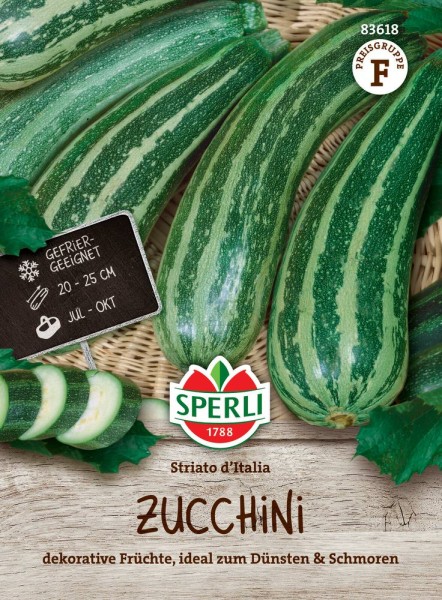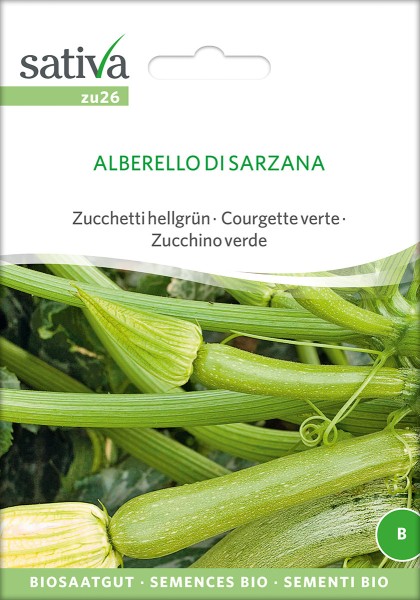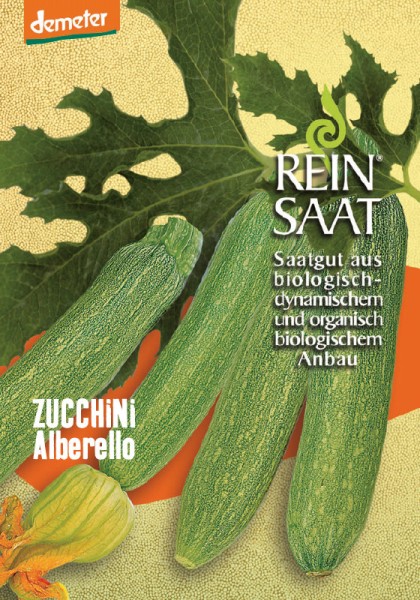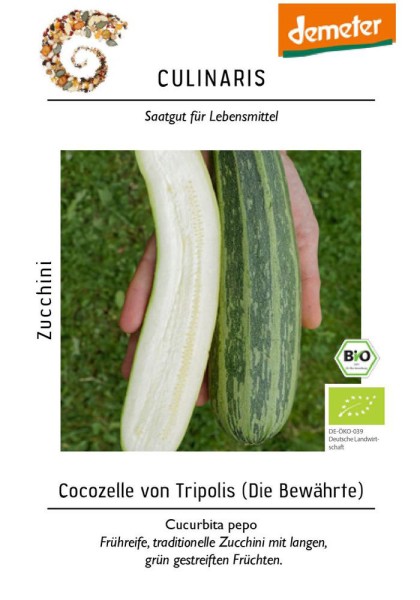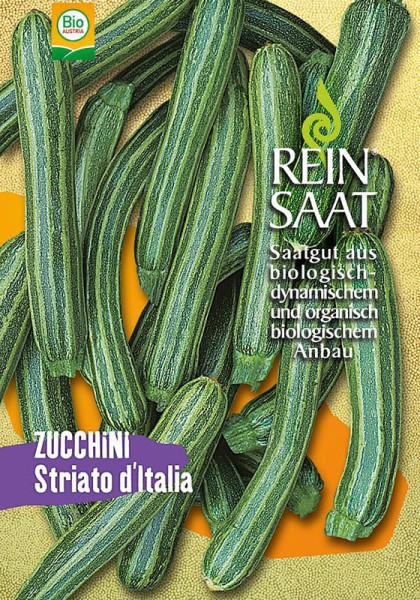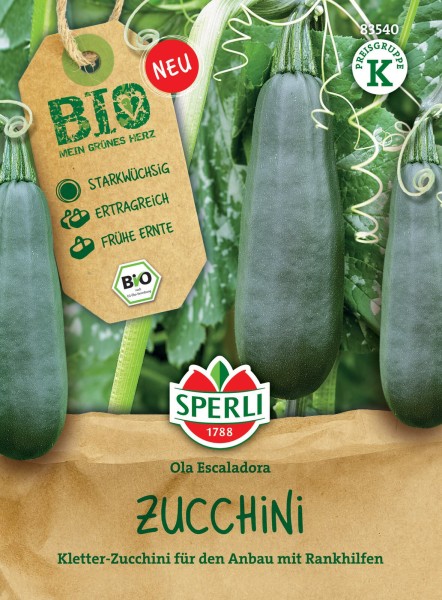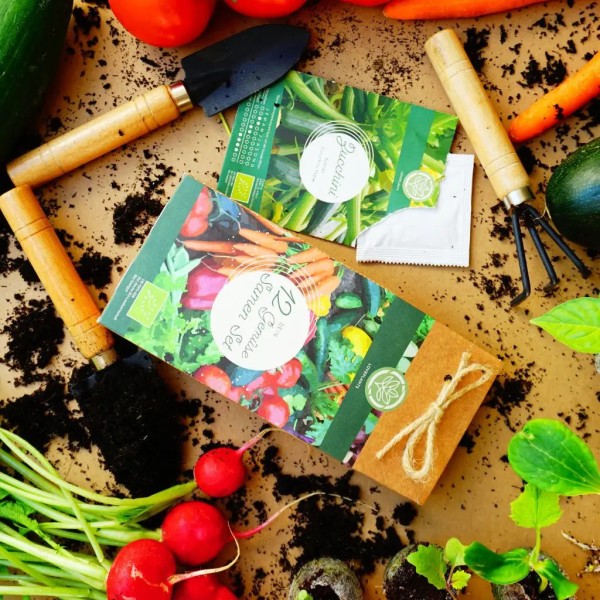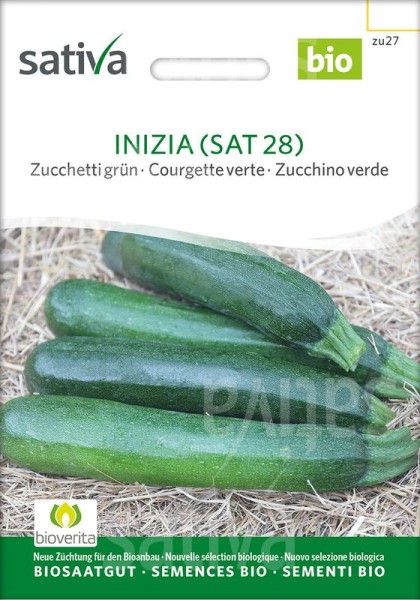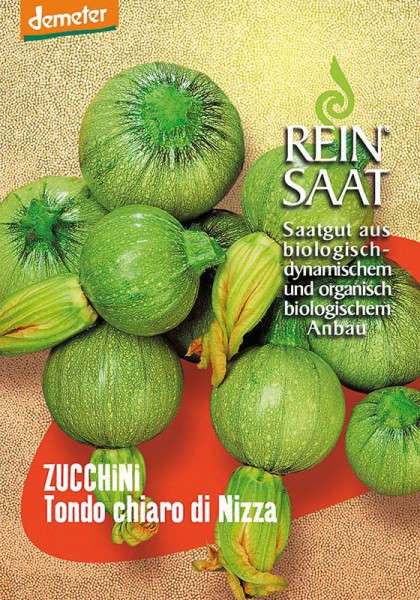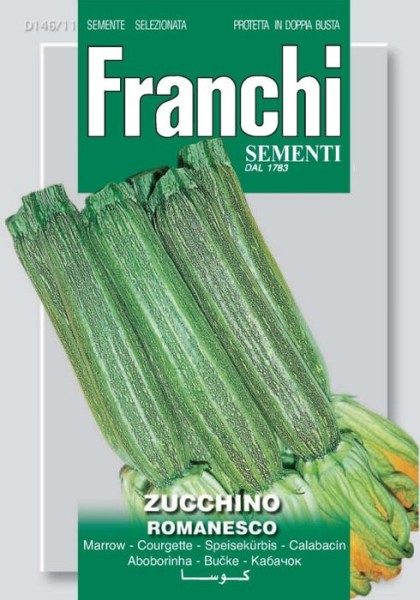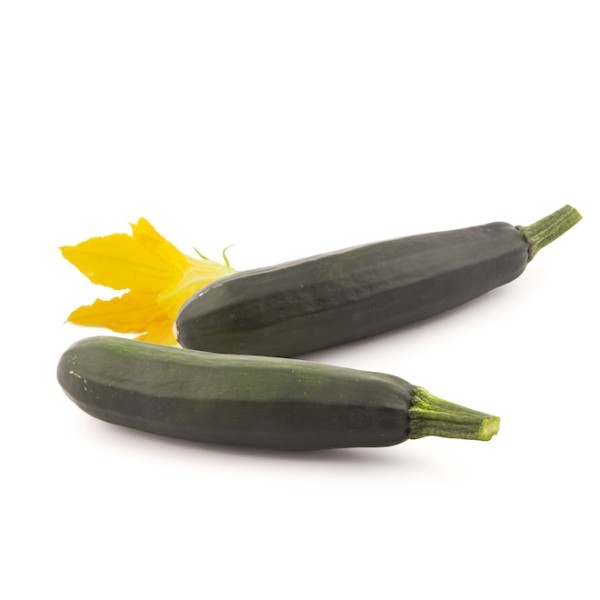For a long time, zucchini (Cucurbita pepo L. var. Giromontiina) were rather unknown in this country. These days, they have become an indispensable part of the garden. Rightly so: they are a versatile vegetable and are suitable for beginning gardeners. The plants are undemanding, grow quickly, and bring an abundant harvest throughout the summer. The fruits can be eaten raw, baked, steamed, or roasted, and even the beautiful, large flowers are edible!
Zucchini Varieties
Zucchini belong to the pumpkin family and – like melon and cucumber – are closely related to the pumpkin. Their name comes from Italian and means “small pumpkins”. Summer squashcomes in different shapes and colours. Cylindrical, green-marbled, or striped fruits such as the Serafina, Zuboda, or Striato d’Italia varieties are widespread. The bush-shaped gold rush and the Sativa Auslese bear yellow fruit. Black Beauty zucchini are so dark green that they look almost black. If you’re not in the mood for long fruit, you can use Tondo chiaro to add the Nice or One Ball F1 round zucchini to your bed – either in green or yellow.
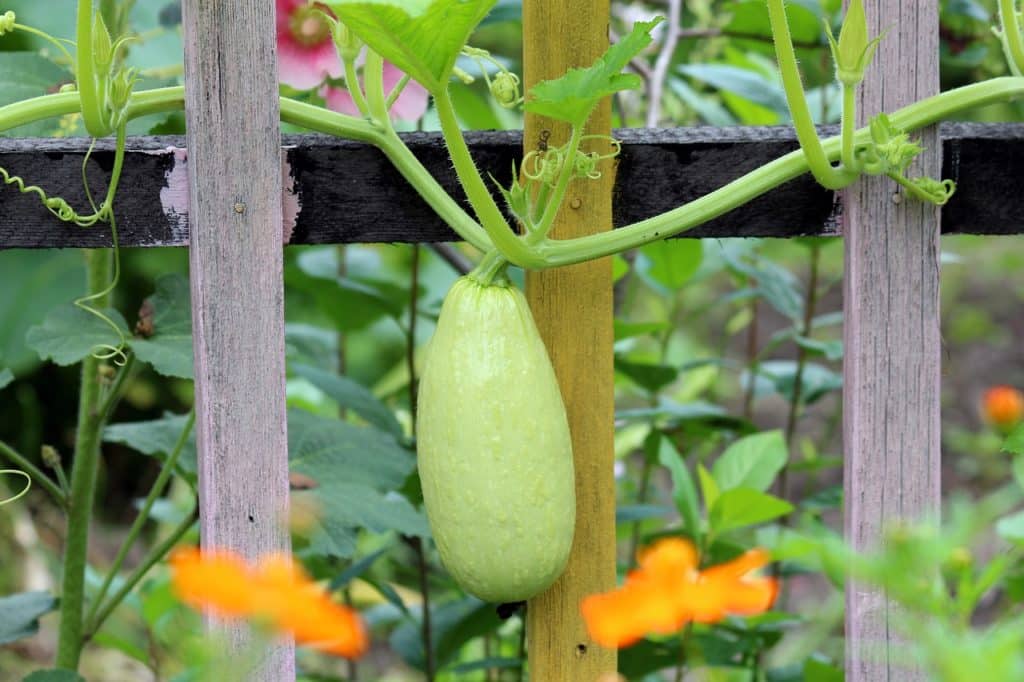
Sow and Nurture Zucchini
You can either sow zucchini directly into the garden bed or nurture them as young plants inside. You can start growing them in pots in April. Place the seeds about three centimetres deep in the soil and place the pots in a warm, bright place. Zucchini seeds germinate at temperatures between 15 and 25 degrees, depending on the variety.
Zucchini plants do not tolerate frost. Do not place them in the bed until night frosts are no longer to be expected. This is usually the case from mid-May onwards. The distance between the plants should be at least one meter; zucchini plants are usually very large! From mid-Mayon, you can also sow the seeds outdoors. Pro tip: you don’t have to buy fresh seeds every year. Zucchini seeds remain plantable for about four to five years. To see how you can check whether your seeds are still germinating, click here.
Location and Maintenance
Zucchini plants need a lot of space, water, and warmth. Plant them in a sunny spot in the garden. The soil should be permeable and rich in nutrients: zucchini are hearty eaters. They are happy if you enrich their bed with compost and fertilizer in spring and fertilize them occasionally during the growth phase. Next to the compost pile is a great place for them, as the plant can provide shade for it with its large leaves.
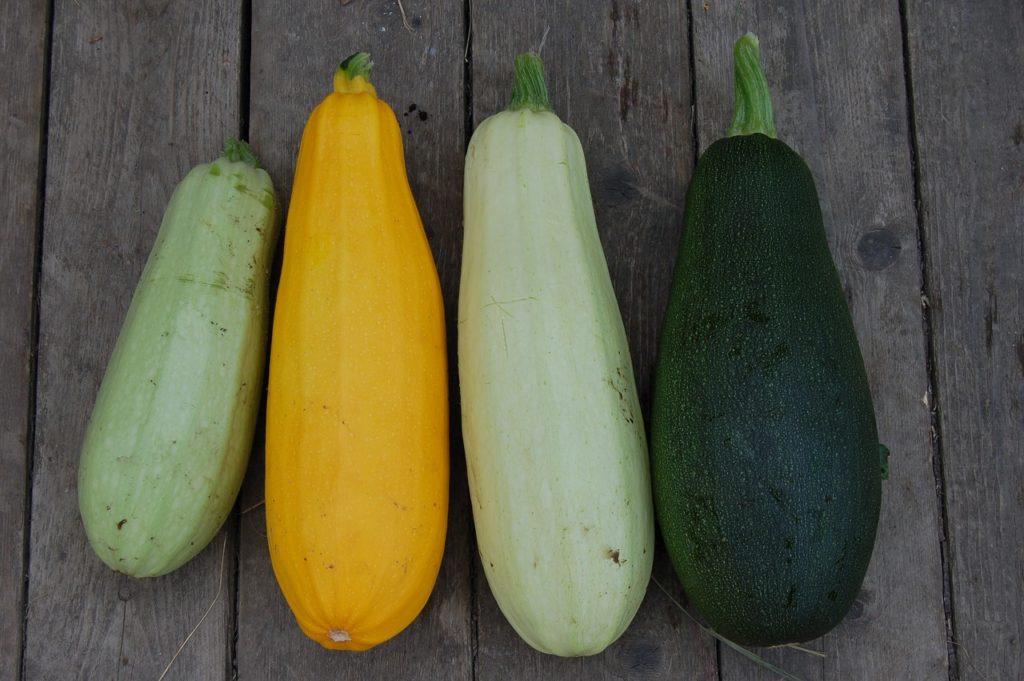
Like cucumber and pumpkin, you should also water summer squash regularly. Otherwise, the fruits may become deformed or taste bitter. A mulch layer also helps to keep the soil moist, however, snails that eat young leaves, flowers, and fruits can also crawl into the soil. Mildew and variants of the mosaic virus can also cause problems. Our tip: if your zucchini does not bear fruit despite many flowers, it can help to pollinate it by hand.
Harvesting, Use, and Preservation
Zucchini plants grow rapidly and produce fruit very quickly. You can harvest for the first time just six to eight weeks after planting. The squash are still quite small, but that’s a good thing. As long as the fruits are between 10 and 20 centimetres long, the narrow ones taste best. Another advantage is that the more often you harvest, the faster the plant starts new flowers,and they not only produce new courgettes, they can also be eaten themselves. Cut raw in a salad, filled with ricotta, or turned into dough and fried, zucchini flowers are a delicacy. Depending on when they are planted, you can harvest zucchini until October. You can eat the squash raw in a salad, grill them, stew them, and fry them. You can use them for soups and ratatouille, quick bread, and savoury cakes. You can fill large squash with minced meat or herbed cream cheese and bake them.
Caution: If zucchini taste bitter or soapy, don’t eat it! They may contain the toxic bitter substance cucurbitacin, which can be fatal.
You can store zucchini squash for several days in a cool place – but not together with apples. The gas ethylene makes them ripen. To preserve the squash, you can dry it, boil it down, or make jam from it.

